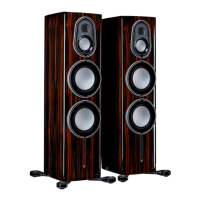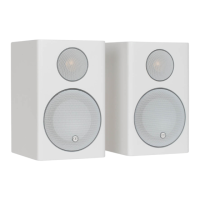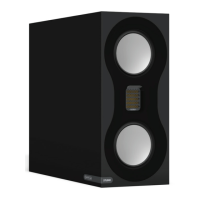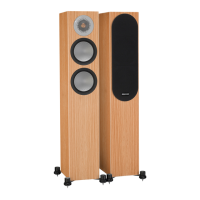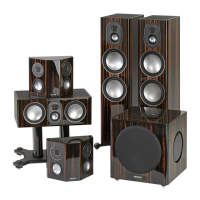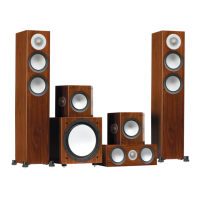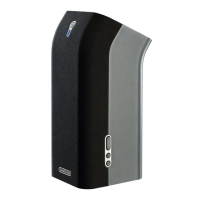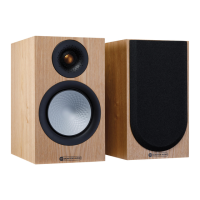tweeter only gets sent high frequency signals. This means that if separate speaker cables are connected to the low
frequency terminals, and the high frequency terminals, not only have the drive units and the frequency’s directed and
divided for them, but the two separate speaker cables will now also carry dierent signals, the bass cable mostly the
lows, and the tweeter cable mostly the highs.
In a single wired system, unwanted mechanical and electrical resonances manifest as distortion at both sets of
speaker terminals. Due to the impedance of the speaker cables, these distortions will not be entirely cancelled
by the amplier. Instead, they modulate between the two crossovers, and degrade sound quality. When bi-wiring,
this interaction is minimised as signal distortion is ‘seen’ at the amplier’s output where it can be more eectively
cancelled. Bi-wiring/ bi-amping therefore presents a ‘cleaner’ signal at both the low frequency and high frequency
speaker terminals, and because the high and low frequencies have already been separated, each has a minimal eect
on the other - in essence the bass does not overpower delicate treble.
In terms of the audible benet, bi-wiring/ bi-amping, provides more clarity and detail to the midrange and high
frequencies. Often the bass will become faster and tighter. Focus and staging will improve as well. In all, this is a
very eective and desirable improvement and is highly recommended by Monitor Audio.
Port bungs
WARNING: Care must be taken not to insert the port bungs too far into the port, as this may result in the
foam bung being lost inside the cabinet.
If the loudspeaker is to be installed in a small room, typically 9 sqM (80 sqFT), or a room known to reproduce
accentuated bass response, it may be desirable to t port bungs. However, experimentation is recommended with
positioning of the loudspeaker in the room prior to tting. To optimise performance, it is important to ensure the
loudspeaker is not positioned too close to a wall or near the corners of a room (refer to the suggestions on page 7).
If the positioning of the loudspeaker is predetermined by room aesthetics or layout, or you nd you have accentuated
bass, please move on and read point 1 for the PL100 II/ PLC150 II/ PLC350 II and point 2 for the PL100 II/ PL200 II/
PL500 II.
1. Where stand-mount/ centre channel speakers (PL100 II, PLC150 II & PLC350 II) are to be sited in close proximity
(less than 8 inches/ 20cm) to a rear wall (such as on a bookshelf, positioned in a cabinet or on a stand close
to a wall), we recommend tting port bungs to the ports. This will reduce the bass ‘boom’ sometimes termed
as overhang, and assist the loudspeakers to reproduce their best performance under these environmental
conditions. ‘Boom’ is generally caused when bass energy from the loudspeaker ‘excites’ room modes and causes
an accentuation at a particular frequency, or number of frequencies.
2. Where oor-standing loudspeakers (PL200 II, PL300 II & PL500 II) are to be sited in close proximity (closer
than 18 inches/ 45cm) to a rear wall, we recommend tting the port bungs. This will reduce the bass ‘boom’
sometimes termed as overhang and assist the loudspeakers to reproduce their best performance under these
environmental conditions. This is caused when bass energy from the loudspeaker ‘excites’ room modes and
causes an accentuation at a particular frequency, or number of frequencies.
When tting port bungs the overall bass extension will not be reduced, however bass energy/ output around the
port tuning frequency will be reduced. This has the eect of reducing bass ‘boom’ while increasing bass clarity
and apparent agility.
In all circumstances experimentation is highly recommended.
monitoraudio.com 11
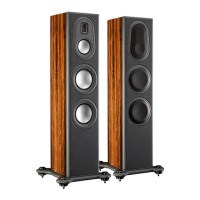
